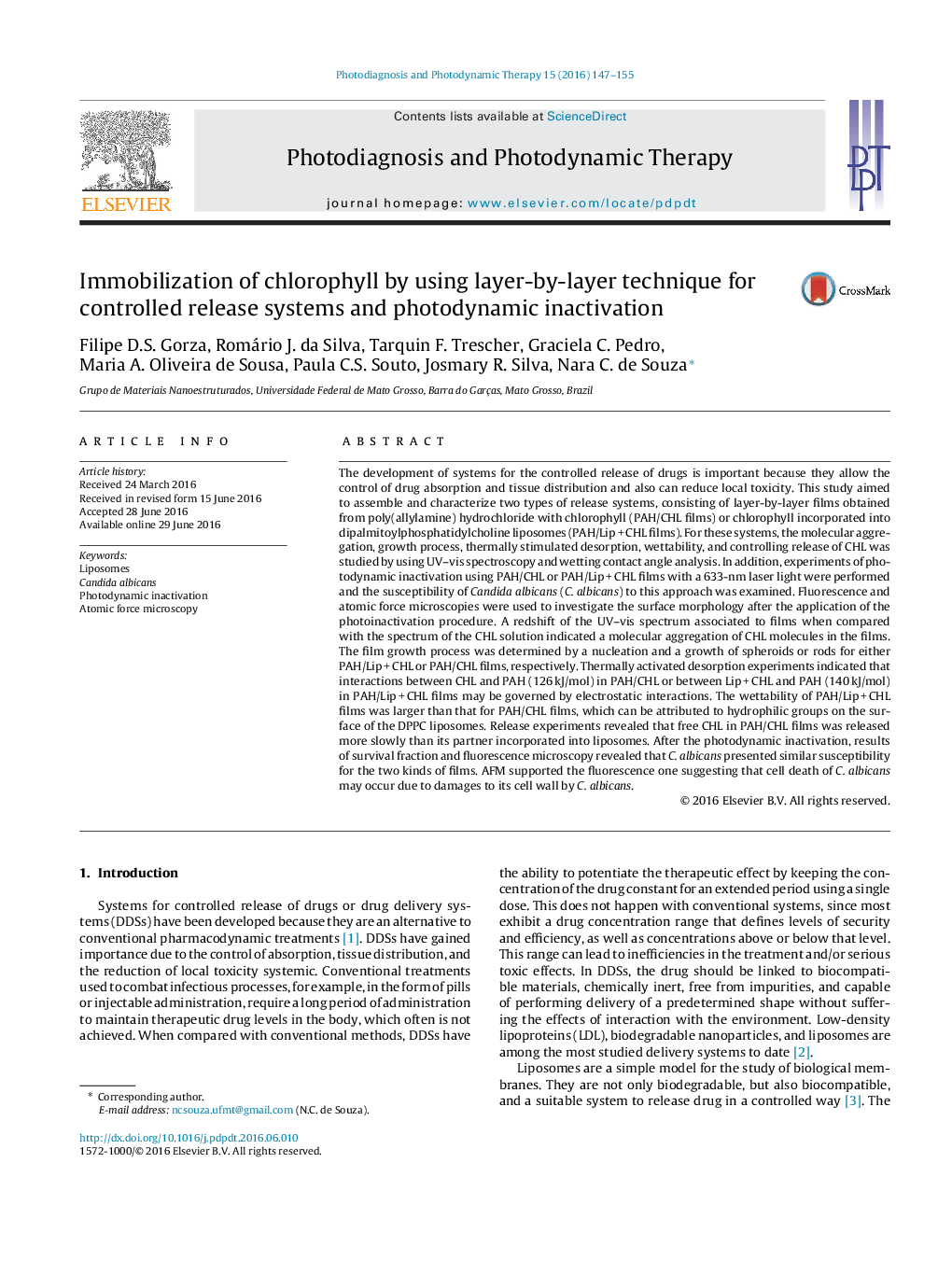| کد مقاله | کد نشریه | سال انتشار | مقاله انگلیسی | نسخه تمام متن |
|---|---|---|---|---|
| 6154411 | 1597727 | 2016 | 9 صفحه PDF | دانلود رایگان |
- We studied CHL free or CHL incorporated into liposomes as simple systems for drug delivery.
- For photodynamic inactivation of C. albicans the combination of CHL and laser was used.
- Inactivation and cell death occur due to damage to the cell walls.
The development of systems for the controlled release of drugs is important because they allow the control of drug absorption and tissue distribution and also can reduce local toxicity. This study aimed to assemble and characterize two types of release systems, consisting of layer-by-layer films obtained from poly(allylamine) hydrochloride with chlorophyll (PAH/CHL films) or chlorophyll incorporated into dipalmitoylphosphatidylcholine liposomes (PAH/Lip + CHL films). For these systems, the molecular aggregation, growth process, thermally stimulated desorption, wettability, and controlling release of CHL was studied by using UV-vis spectroscopy and wetting contact angle analysis. In addition, experiments of photodynamic inactivation using PAH/CHL or PAH/Lip + CHL films with a 633-nm laser light were performed and the susceptibility of Candida albicans (C. albicans) to this approach was examined. Fluorescence and atomic force microscopies were used to investigate the surface morphology after the application of the photoinactivation procedure. A redshift of the UV-vis spectrum associated to films when compared with the spectrum of the CHL solution indicated a molecular aggregation of CHL molecules in the films. The film growth process was determined by a nucleation and a growth of spheroids or rods for either PAH/Lip + CHL or PAH/CHL films, respectively. Thermally activated desorption experiments indicated that interactions between CHL and PAH (126 kJ/mol) in PAH/CHL or between Lip + CHL and PAH (140 kJ/mol) in PAH/Lip + CHL films may be governed by electrostatic interactions. The wettability of PAH/Lip + CHL films was larger than that for PAH/CHL films, which can be attributed to hydrophilic groups on the surface of the DPPC liposomes. Release experiments revealed that free CHL in PAH/CHL films was released more slowly than its partner incorporated into liposomes. After the photodynamic inactivation, results of survival fraction and fluorescence microscopy revealed that C. albicans presented similar susceptibility for the two kinds of films. AFM supported the fluorescence one suggesting that cell death of C. albicans may occur due to damages to its cell wall by C. albicans.
Cross-section height profiles of Candida albicans + CHL before and after irradiation by laser light (633 nm) and a dose of 25.5 J/cm2. Our results suggest that the cellular wall of C. albicans may be ruptured as a result of photodynamic inactivation.137
Journal: Photodiagnosis and Photodynamic Therapy - Volume 15, September 2016, Pages 147-155
